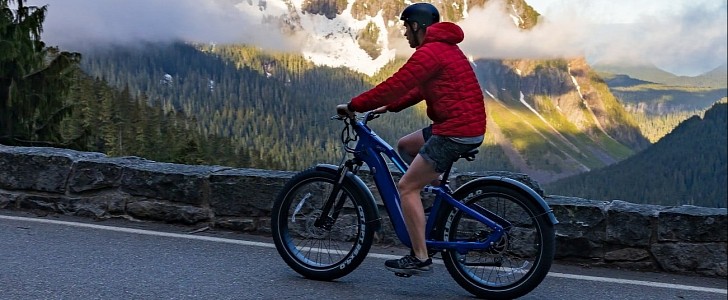The e-bike industry is currently experiencing a massive push toward tech integration. An example of this trend is the Okai EB50. The company just released an over-the-air (OTA) update, which lets users notably increase the e-bike's top speed.
The Okai EB50 was initially released as the Okai Ranger, and it boasts a 750 W Bafang motor with a peak output of 1000 W. This translated into a top speed of 20 mph (32 kph).
When we update our products, we typically expect bug fixes or a better-looking app. Okai took the next step and managed to up performance by simply changing the integrated software's code.
According to an email we've received from Okai, the new option unlocks a top speed of 28 mph (45 kph). Surprisingly, users have confirmed seeing speeds as high as 31 mph (50 kph) when using the e-bike at full charge. Given that most e-bikes feature motors that are powered directly from their pack voltage, a higher charge gives off higher motor RPMs.
This update appears to unlock the new top speed when riding throttle-only. Consequently, regulatory issues might emerge as the Okai e-bike no longer fits in any of the three designated e-bike classes in the U.S. For instance, Class 3 electric bicycles require pedal assistance to engage motor power between 20-28 mph (32-45 kph). The EB50 falls outside of this category as you can hit the same top speed using only its throttle.
Why did the manufacturer fit this bike with so much power? The e-bike is made to support a max load of 330 lbs. (150 kg) and still have enough juice to climb hills and provide 45 miles (72 km) of range. Moreover, the $2,000 (€ 2,016) machine comes with other techy features such as an NFC-enabled key card for locking and unlocking.
As hardware innovations are often expensive, more and more companies are trying to differentiate themselves by using state-of-the-art software and tech-related features. It will be interesting to see how this trend will influence the future of the EV industry and if we'll end up having to purchase additional updates to increase the performance of our vehicles.
When we update our products, we typically expect bug fixes or a better-looking app. Okai took the next step and managed to up performance by simply changing the integrated software's code.
According to an email we've received from Okai, the new option unlocks a top speed of 28 mph (45 kph). Surprisingly, users have confirmed seeing speeds as high as 31 mph (50 kph) when using the e-bike at full charge. Given that most e-bikes feature motors that are powered directly from their pack voltage, a higher charge gives off higher motor RPMs.
This update appears to unlock the new top speed when riding throttle-only. Consequently, regulatory issues might emerge as the Okai e-bike no longer fits in any of the three designated e-bike classes in the U.S. For instance, Class 3 electric bicycles require pedal assistance to engage motor power between 20-28 mph (32-45 kph). The EB50 falls outside of this category as you can hit the same top speed using only its throttle.
Why did the manufacturer fit this bike with so much power? The e-bike is made to support a max load of 330 lbs. (150 kg) and still have enough juice to climb hills and provide 45 miles (72 km) of range. Moreover, the $2,000 (€ 2,016) machine comes with other techy features such as an NFC-enabled key card for locking and unlocking.
As hardware innovations are often expensive, more and more companies are trying to differentiate themselves by using state-of-the-art software and tech-related features. It will be interesting to see how this trend will influence the future of the EV industry and if we'll end up having to purchase additional updates to increase the performance of our vehicles.









